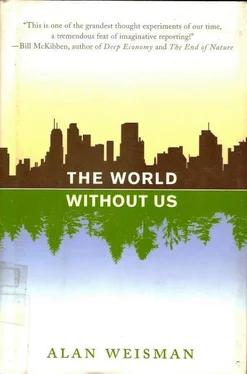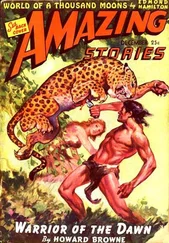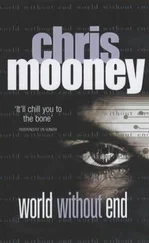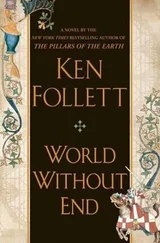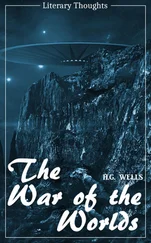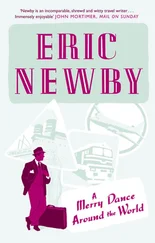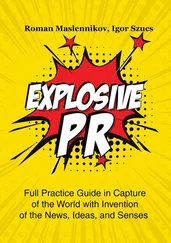Scientific American Discovering Archaeology Special Report: Monte Verde Revisited . November-December 1999:
• Fiedel, Stuart J. “Artifact Provenience at Monte Verde: Confusion and Contradictions,” 1–12.
• Dillehay, Tom, et al. “Reply to Fiedel, Part I,” 12–14.
• Collins, Michael. “Reply to Fiedel, Part II,” 14–15.
• West, Frederick H. “The Inscrutable Monte Verde,” 16–17.
• Haynes, Vance. “Monte Verde and the Pre-Clovis Situation in America,” 17–19.
• Anderson, David G. “Monte Verde and the Way American Archaeology Does Business,” 19–20.
• Adovasio, J. M. “Paradigm-Death and Gunfights,” 20.
• Bonnichsen, Robson. “A Little Kinder?” 20–21.
• Tankersley, Ken B. “The Truth Is Out There!” 21–22.
Sheldrick, Daphne. “The Elephant Debate.” The David Sheldrick Wildlife Trust, 2006, http://www.sheldrickwildlifetrust.org/html/debate.html.
Smith, Thierry, Kenneth D. Rose, and Philip D. Gingerich. “Rapid Asia-Europe-North America Geographic Dispersal of Earliest Eocene Primate Teilhardina During the Paleocene-Eocene Thermal Maximum.” Proceedings of the National Academy of Sciences USA , vol. 103, no. 30, July 25, 2006, 11223–27.
Spinney, Laura. “Return to Paradise.” New Scientist , vol. 151, no. 2039, July 20, 1996, 26.
Steadman, David. “Prehistoric Extinctions of Pacific Island Birds: Biodiversity Meets Zooarchaeology.” Science , vol. 267, 1123–31.
Steadman, David, et al. “Asynchronous extinction of late Quaternary sloths on continents and islands.” Proceedings of the National Academy of Sciences USA , vol. 102, no. 33, August 16, 2005, 11763–68.
Steadman, David, G. K. Pregill, and S. L. Olson. “Fossil vertebrates from Antigua, Lesser Antilles: Evidence for late Holocene human-caused extinctions in the West Indies.” Proceedings of the National Academy of Sciences USA , vol. 81, 1984, 4448–51.
Steadman, David, and Anne Stokes. “Changing Exploitation of Terrestrial Vertebrates During the Past 3000 Years on Tobago, West Indies.” Human Ecology , vol. 30, no. 3, September 2002, 339–67.
Stengel, Marc K. “The Diffusionists Have Landed.” The Atlantic Monthly , January 2000, vol. 285, no. 1, 35–48.
Sterling, Bruce. “One Nation, Invisible.” Wired , Issue 7.08, August 1999.
Stevens, William K. “New Suspect in Ancient Extinctions of the Pleistocene Megafauna: Disease.” New York Times , April 29, 1997.
Stewart, Jr., C. Neal, et al. “Transgene Introgression from Genetically Modified Crops to Their Wild Relatives.” Nature , vol. 4, Oct. 2003, 806–17.
Sublette, Carey. “The Nuclear Weapon Archive: A Guide to Nuclear Weapons.” May 2006, http://nuclearweaponarchive.org/.
Takada, Hideshige. “Pellet Watch: Global Monitoring of Persistent Organic Pollutants (POPs) Using Beached Plastic Resin Pellets.” Proceedings of the Plastic Debris, Rivers to Sea Conference, Redondo Beach, CA Sept. 2005 , http://conference.plasticdebris.org/proceedings.html.
Tamaro, George J. “World Trade Center ‘Bathtub’: From Genesis to Armageddon.” The Bridge (National Academy of Engineering) , vol. 32, no. 3, spring 2002, 11–17.
“Technical Factsheet on: Lead.” In National Primary Drinking Water Regulations . U.S. Environmental Protection Agency, February 28, 2006, http://www.epa.gov/OGWDW/dwh/t-ioc/lead.html.
Tegmark, Max, and Nick Bostrum. “How Unlikely Is a Doomsday Catastrophe?” Nature , December 8, 2005, vol. 438, 754.
Thompson, Clive. “Derailed.” New York Magazine , February 28, 2005.
Thompson, Daniel Q., Ronald L. Stuckey, and Edith B. Thompson. “Spread, Impact, and Control of Purple Loosestrife (Lythrum salicaria) in North American Wetlands.” U.S. Fish and Wildlife Service. Jamestown, N. Dak.: Northern Prairie Wildlife Research Center, online, June 4, 1999, http://www.npwrc.usgs.gov/resource/plants/loosstrf/loosstrf.htm.
Thompson, Richard C., et al. “Lost at Sea: Where Is All the Plastic?” Science , vol. 304, May 7, 2004, 838.
Thorson, Robert M. “Stone Walls Disappearing.” Connecticut Woodlands , Winter 2005.
“ToxFAQs for Polycyclic Aromatic Hydrocarbons (PAHs).” Agency for Toxic Substances and Disease Registry, 1996, http://www.atsdr.cdc.gov/tfacts69.html.
U.S. Army Environmental Policy Institute (USAEPI), “Health and Environmental Consequences of Depleted Uranium Use by the U.S. Army.” Summary Report to Congress, June 1994.
van der Linden, Bart, Harm Smeenge, and Frank Verhart. Sustainable Forest Degeneration in Białoivieża , 2004, http://www.franknature.nl.
Vartanyan, S. L., et al. “Radiocarbon Dating Evidence for Mammoths on Wrangel Island, Arctic Ocean, Until 2000 BC.” Radiocarbon , vol. 37, no. 1, 1995, 1–6.
Vitello, Paul. “Rusty Railroad on Its Way to Pristine Park.” New York Times , June 15, 2005.
Volk, Tyler. “Sensitivity of Climate and Atmospheric CO? to Deep-Ocean and Shallow-Ocean Carbonate Burial.” Nature , vol. 337, 1989, 637–40.
Wagner, Thomas. “Humans in England May Go Back 700,000 Years.” Associated Press , December 14, 2005.
Weinstock, J., E. Willerslev, A. Sher, W. Tong, S. Y. Flo, et al. “Evolution, Systematics, and Phylogeography of Pleistocene Horses in the New World: A Molecular Perspective.” Public Library of Science: Biology , vol. 3, no. 8, August 2005, e24l.
Weisman, Alan. “Diamonds in the Wild.” Condé Nast Traveler , December 2001, 104+.
Weisman, Alan. “Earth Without People.” Discover Magazine , vol. 26, no. 02, February 2005, 60–65.
Weisman, Alan. “Journey Through a Doomed Land.” Harper’s , vol. 289, no. 1731, August 1994, 45–53.
Weisman, Alan. “Naked Planet.” Los Angeles Times Magazine , April 5, 1992, 16+.
Weisman, Alan. “The Real Indiana Jones.” Los Angeles Times Magazine , October 14, 1990, 12+.
Wenning, Richard J., et al. “Importance of Implementation and Residual Risk Analyses in Sediment Remediation.” Integrated Environmental Assessment and Management , vol. 2, no. 1, 59–65.
Wesołowski, Tomasz. “Virtual Conservation: How the European Union Is Turning a Blind Eye to Its Vanishing Primeval Forest.” Conservation Biology , vol. 19, no. 5, October 2005, 1349–58.
Western, David. “Human-modified Ecosystems and Future Evolution.” Proceedings of the National Academy of Sciences , May 8, 2001, vol. 98, no. 10, 5458–65.
Western, David, and Manzolillo Nightingale. “Environmental change and the vulnerability of pastoralists to drought: The Maasai in Amboseli, Kenya.” Africa Environment Outlook Case Studies , United Nations Environment Programme, Nairobi, 2003.
Western, David, and Manzolillo Nightingale. “Keeping the East African Rangelands Open and Productive.” Conservation and People , vol. 1, no. 1, October 2005.
Westling, Arthur, et al. “Long-term Consequences of the Vietnam War: Ecosystems.” Report to the Environmental Conference on Cambodia, Laos and Vietnam , September 15, 2002.
Willis, Edwin O. “Populations and Local Extinctions of Birds on Barro Colorado Island, Panama.” Ecological Monographs , vol. 44, no. 2, spring 1974, 153–69.
“WIPP Remote-Handled Transuranic Waste Study.” DOE/CAO 95–1095, U.S. Department of Energy, Carlsbad Area Office, Carlsbad, N. Mex., October 1995.
Yamaguchi, Eiichiro. “Waste Tire Recycling.” Master’s thesis, Theoretical and Applied Mechanics, University of Illinois at Urbana, Champaign, October 2000, http://www.p2pays.org/ref/11/10504/.
Читать дальше
